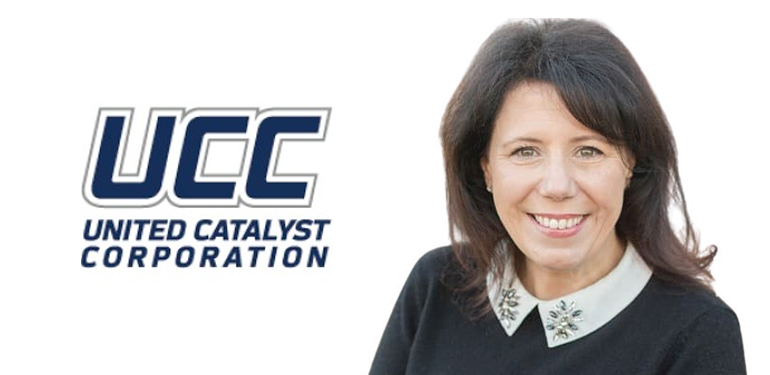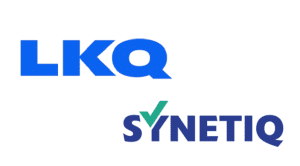Becky Berube serves the recycling community as president of United Catalyst Corporation, is a member of the Automotive Recycling Association’s Educational Programming Committee and is a past president of the International Precious Metals Institute.
An updated platinum group metals outlook for 2023 and beyond
By Becky Berube
Back in July, we at United Catalyst Corporation summarized the 2022 outlook for Platinum Group Metals (PGMs) with excerpts from the Johnson Matthey Market Report. The report proved true on many fronts. Business conditions have not returned to pre-pandemic levels. Industrial demand for Platinum has remained robust. The war in Ukraine has restricted Palladium supplies. Operational challenges have restricted South African PGM supplies. Covid lockdowns in China have hit supply chains and cut vehicle output. Auto recycling volumes have contracted, with vehicle scrappage rates hit by weak car sales. Used car prices remain high and vehicles are remaining on the road longer than in the past. The secondary supply of PGMs from autocatalyst scrappage volumes has contracted as a result.
What does this mean for PGM prices?
Fundamentally, a decrease in supply and an increase in demand should produce higher prices. The tight supply of palladium and rhodium is responsible for the record highs in recent years, while the ample supply of platinum has kept its price soft.
Increased demand for platinum is responsible for the strength of its current price. Unfortunately for palladium and rhodium, the shortage in primary and secondary supply is being met with a decrease in demand due to the lower production of automobiles this year and in recent years. The results are soft, flat, or decreased prices for palladium and rhodium in the foreseeable future. More than 65 percent of the world’s demand for PGMs comes from the automotive industry in the making of catalytic converters to control emissions. Jewelry and investment demand make up most of the remaining percentage. At least 75 percent of the world’s primary supply of PGMs come mainly from mining in Russia and South Africa. The remaining 25 percent of secondary supply of PGMs comes from recycling of which catalytic converters from automotive recycling makes up the lion’s share.
What does the future hold for PGMs?
If you have been recycling for many years, you will recall that platinum was the major PGM in catalytic converters. About 10 years ago, auto manufacturers switched or thrifted platinum for palladium because it was half the price at the time and took twice as much metal to do the same job. Today, recycling produces two to three times more palladium than platinum and is twice as expensive. The amount of palladium combined with its high price and the recent spike in rhodium prices has resulted in historically high scrap catalytic converter values. This has been a windfall for anyone in the PGM recycling supply chain.
Back to the future. You can expect auto recycling volumes to increase over the next five to 10 years and this means a surplus of palladium along with it. This would be good news in our current scheme; however, as the road to net zero emissions continues, and the sale of electric vehicles increases, the demand for PGMs decreases. It is likely that PGMs from recycling will increase to 30 percent of the world’s supply with a sharp decrease in demand from 65 percent to an unknown less amount. The result will be a surplus of palladium and rhodium for sure. The real winner in the PGM complex will be platinum. Many experts believe that electrification will not have as high an adoption as anticipated due to mineral and infrastructure constraints. They expect the hydrogen economy to ramp up where platinum is the major PGM used to store energy.
Short- and Medium-Term Outlook
It is easy to become short sighted with price movement in the PGM complex. We quickly forget that only six years ago the cumulative average for platinum was $968 per troy ounce, palladium was $612 per troy ounce, and rhodium was $663 per troy ounce. It was 14 years ago when rhodium spiked briefly to $10,000 per troy ounce, and nearly $30,000 last year. These spikes are exceptions not the norm. A reminder that 2022 average prices were historically very high near $960, $2,100, and $14,000, respectively. At New York City’s Platinum Week in September, precious metals analysts suggested that platinum averages would be slightly off its highs for the remainder of 2022, but long term (more than five years) will be the winner. In the short term, palladium remains supported around its current levels but may find a lower home around $1,700 per troy ounce in Q2 of 2023. Rhodium looks to enjoy its current level and may even see a slight uptick and settle in the $16,000 per troy ounce mid to late 2023.
What does this mean for auto recyclers?
What the data suggests to us at United Catalyst Corporation is that the remainder of 2022 and early 2023 is the strongest markets we may see for the time being. Stay hedged and continue recycling and selling your metal into the market. The future is uncertain. We know that electrification will play a role in decreased demand for PGMs. How much of a decrease is yet to be determined.
Keep your eye on platinum and the hydrogen economy in the years to come. Pay attention to any additional uses for palladium and rhodium. We are going to need them.
For daily updates on the PGM markets, subscribe to our daily e-newsletter or get Platinum Group Metal prices texted twice daily to your phone, TEXT Daily to 844-713-PGMs (7467). You can also call us or email us at sales@unitedcatalystcorporation.com.


























